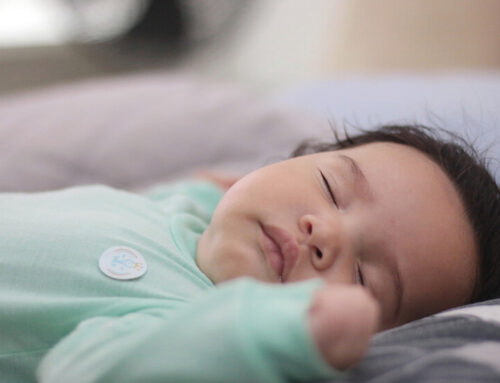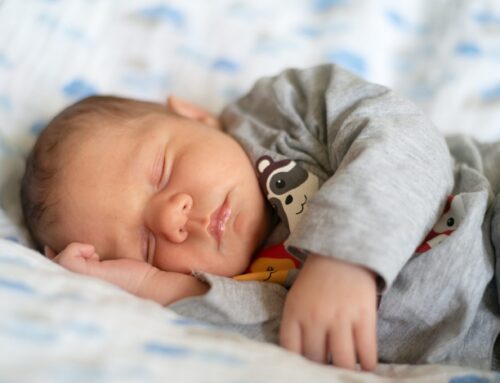From early infancy through around 4 months of age, your baby’s wake/sleep patterns go through many changes.
Infant Sleep Patterns during the Early Weeks
In the first few weeks of life, babies mostly sleep and eat. Typically, within 1–2 hours of awakening, the infant is ready to go back to sleep. During the few precious hours of the day when your infant is alert but not feeding, place the infant on an activity mat or in a swing and talk to her, play music, or play with her.
Infant Sleep Patterns at 1–2 Months of Age
Infants begin to understand day and night and usually begin to sleep more at night and stay awake more during the day. One of the first important parts of sleep training involves starting a bedtime routine in the later evening in order to prepare the infant for the beginning of nighttime. This routine should be similar from night to night and also occur around the same time each night. The time frame for this routine may vary based on the temperament of your infant. For example, colicky infants may not be ready for a routine at 8 pm if that is the peak of their fussy time. For those infants it may be best to begin after their fussy period is over for the night. Some examples of bedtime routines include using a bath, massage, or lullaby to soothe the infant prior to placing her in her crib or bassinet to sleep for the night. It should last for about 20–30 minutes, and from that time until the morning, the room should be dark, and there should be minimal stimulation when your infant awakens to feed. Sometimes, the diaper may not need to be changed unless it is soiled to avoid arousing the infant more from sleep.
Infant Sleep Patterns at 4 Months
Most infants are ready to sleep through the night. They are usually big enough to eat the calories they need during the day and sleep through the night for 10–12 hours. They are also, developmentally ready to self-soothe and therefore put themselves to sleep at bedtime and put themselves back to sleep after natural nighttime arousals. Learning to go to sleep and go back to sleep is a very important developmental milestone. After the bedtime routine, your infant should be put in the crib for the night while still awake and learn over a few nights to go to sleep without being rocked or held. For some people, it may be best to place your baby in the crib or bassinet and check in at increasing intervals (5 minutes then 10 more minutes, etc.) to soothe without picking your baby up or rocking her.
For others, not going in to the infant’s sleeping area for up to an hour may be better. After a few nights, most infant’s periods of crying lessen and the infant falls asleep shortly after being put down to sleep. For nighttime arousals, the same methods can be applied, with varying degrees of crying with or without going to the baby for help with soothing. These methods of sleep training are very effective, but may not be for all parents, so if unsure, you may speak with your pediatrician or consider consulting some of the following books on sleep:
Recommended Reading
- SLEEP The Happiest Baby on the Block: The New Way to Calm Crying and Help Your Newborn Baby Sleep Longer by Harvey Karp, MD
- On Becoming Baby Wise: Giving Your Infant the Gift of Nighttime Sleep by Gary Ezzo, MD and Robert Bucknam, MD
- The No-Cry Sleep Solution: Gentle Ways to Help Your Baby Sleep Through the Night by Elizabeth Pantley
- Healthy Sleep Habits, Happy Child by Marc Weissbluth, MD




